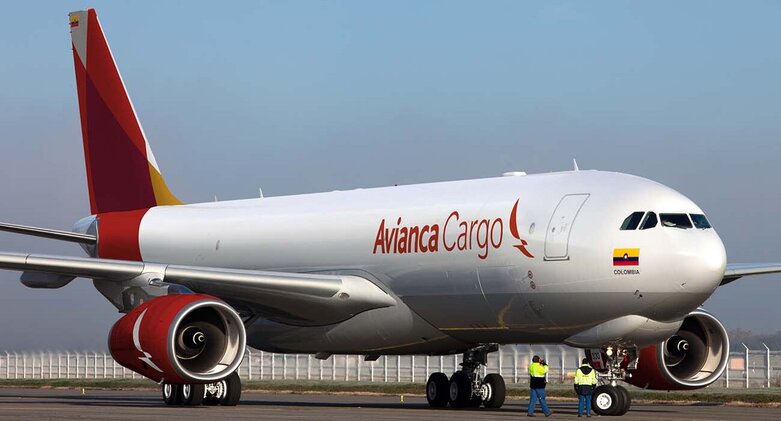The Colombian carrier is growing its freighter fleet by adding an A330P2F to its current fleet of six A330-200F. The aircraft can accommodate 60+ tons per flight and was converted from passenger to cargo aircraft in Singapore by ST Engeneering in cooperation with Elbe Flugzeugwerke, Germany. Subsidiary Avianca Cargo Mexico rounds off the group’s capacity offer to the market by operating two A330P2F.

By growing its fleet and network, the airline is strengthening its role as a key cargo player in Latin America and beyond. The new freighter is fuel efficient and offers abundant cargo capacity for the routes and markets served by the airline, it stresses in a release. These features allow the Bogota-based carrier to continue providing a service that meets customer needs and to grow its network. “At Avianca Cargo, we are celebrating the expansion of our fleet and the arrival of the new converted A330P2F freighter, an aircraft with more than 13 years of history that now joins our fleet to continue reaffirming our commitment to connectivity and service. Today, we reach more than 350 destinations with an expanded network and continue to expand our connections to new markets,” said Diogo Elias, CEO of Avianca Cargo.
New in Maastricht
At the beginning of OCT25, the Latin American capacity provider started serving Maastricht Aachen Airport (MST) in the Netherlands, deploying one of its Airbus A330F. The airport is served twice a week, mainly carrying flowers from Quito, Ecuador, via Miami to Maastricht. Southbound, the freighter flies back to Latin America via Zaragoza with fancy European goods on board. The Galician fashion group, Zara, has a very strong presence in the Spanish city.

Flowers are the main product transported by Avianca Cargo. Over the course of this year, the carrier has flown more than 100,000 tons of roses, carnations and orchids from Ecuador and Colombia to the United States, Europe, and Asia.
Investing in ground infrastructure
In a press release, the company emphasized its growing investment to enhance the infrastructure needed by this product segment. It opened a new, 850 m² Jetflor facility at its Medellín Terminal, doubling the cargo handling capacity there. In its Miami warehouse, the cooling system was reconfigured to keep all perishable cargo in the best temperature conditions. This has improved service quality and also increased capacity by 83%, the airline states.
“We are happy to be strategic allies and leaders in flower transportation. This year, we confirmed our leadership in flower transportation to the United States, broke a historic record, and grew 8% during the seasons, above the sector average,” Diogo declared.
Flowers are a significant economic driver
In Colombia, nearly 220,000 jobs depend directly and indirectly on flower cultivation and trade. In 2024, local producers achieved outstanding performance in flower exports, reaching USD 2.35 billion. Without reliable air transport, this would have been impossible. This remarkable economic result, driven by 13% growth in value and 8% in volume, consolidated the country’s position as the world’s second-largest exporter of roses, carnations, orchids et alia, with a global market share of 16%. Ecuador and Kenya follow suit at some distance. The Netherlands tops the list of the leading flower exporting countries. It accounts for almost 50% of cut flower exports, mainly thanks to its traditional and extensive tulip cultivation.




